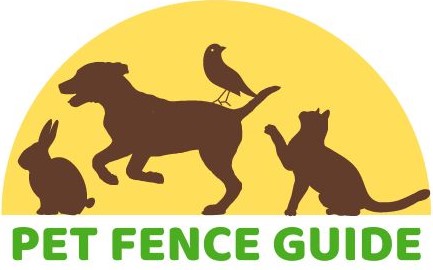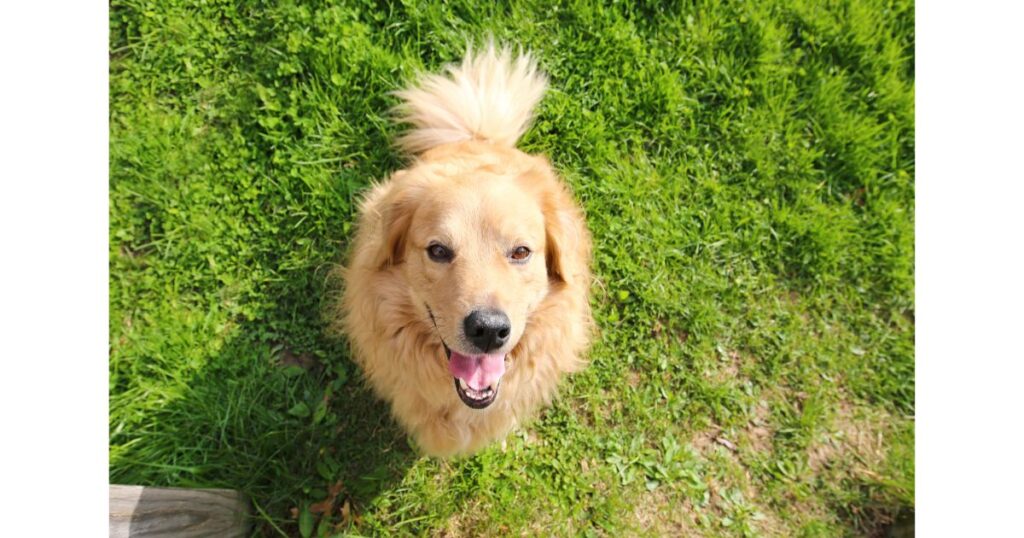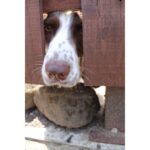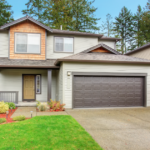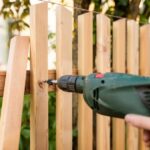Are you a dog owner? If so, you understand how important it is to keep your furry friend safe while still giving them the freedom to roam and play outdoors. That’s where a dog fence outdoors comes into play. In this comprehensive guide, we’ll explore everything you need to know about outdoor dog fences, from the various types available to installation tips and expert advice. By the end of this article, you’ll be well-equipped to make the best choice for your beloved canine companion.
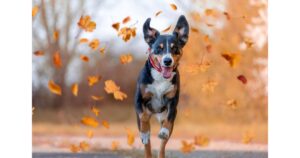
Types of Dog Fence Outdoor
Table of Contents
ToggleWhen it comes to creating a safe and secure outdoor environment for your beloved furry friend, selecting the right type of dog fence is crucial. Your choice should align with your dog’s needs, your property’s layout, and your budget. Let’s delve deeper into the various types of outdoor dog fences and explore their advantages and disadvantages.
1. Traditional Wooden Fence: A traditional wooden fence exudes timeless charm while providing robust security for your dog. It’s not just about safety; the aesthetic appeal of a well-constructed wooden fence can enhance the overall look of your property. However, it’s important to note that the installation process can be relatively costly and time-consuming compared to other options.
2. Chain Link Fence: Chain link fences are renowned for their durability and effectiveness in keeping dogs contained. They are a cost-effective solution for most dog owners. Nevertheless, some agile or determined dogs may attempt to climb over or dig beneath these fences, making them less suitable for escape artists.
3. Wireless Dog Fence: The concept of wireless dog fences has gained popularity in recent years. This innovative system employs a collar and a transmitter to define boundaries. When your dog approaches the established boundary, the collar emits a warning signal. If your pup ignores the signal and continues, a mild static correction gently reminds them to stay within the designated area. The ease of installation and flexibility make wireless fences an attractive option. However, they do require a training period to ensure your dog comprehends their new boundaries.
4. Electric Dog Fence: Electric dog fences are akin to wireless systems but use an underground wire to establish boundaries, rendering them completely invisible. This maintains the aesthetic integrity of your property while giving you the ability to set specific boundaries for your dog. It’s a customizable option that offers an effective way to keep your dog within a defined area.
5. Pet Playpens: For those with smaller yards or the need for a temporary dog containment solution, pet playpens are a practical choice. These portable, easy-to-install pens provide a defined space where your dog can play and explore safely. Pet playpens offer convenience and versatility, making them ideal for various situations.
6. In-Ground Dog Fence: In-ground dog fences are a wired system where you bury a wire along the perimeter of your yard. This wire sends signals to your dog’s collar, alerting them when they approach the boundary. The advantage of in-ground fences is their customizability and suitability for covering larger areas. However, the installation process can be labor-intensive, requiring precision and patience.
Choosing the Right Type of Dog Fence
Selecting the right type of dog fence hinges on several key factors:
- Dog Size and Temperament: Larger, more active dogs may necessitate a sturdier containment system. Consider your dog’s personality and sensitivity to correction signals when making your choice.
- Property Size: The size of your outdoor space plays a vital role in your decision. Smaller yards might be well-suited for wireless or electric fences, while larger areas may require traditional or in-ground systems.
- Installation Time and Effort: Assess the time and effort you can dedicate to installation. Portable options like pet playpens are quick and straightforward, while in-ground systems may require more labor.
By considering these factors and weighing the pros and cons of each dog fence type, you’ll be well on your way to selecting the perfect outdoor containment solution for your canine companion.
Choosing the Right Type of Dog Fence Outdoor
Selecting the perfect outdoor dog fence isn’t a one-size-fits-all decision. To ensure the safety and happiness of your furry friend while harmonizing with your property’s layout, you must consider a variety of factors. Here are some vital aspects to mull over when choosing the right type of dog fence:
1. Dog Size and Activity Level: First and foremost, your dog’s size and energy level play a crucial role in determining the most suitable containment system. Larger and more active dogs may require a more robust and secure fence, such as an in-ground or wireless fence. These options offer a higher level of containment to match the needs of larger, more energetic pups who might test the boundaries with enthusiasm.
2. Property Size: The dimensions of your outdoor space are another pivotal factor in your decision-making process. Smaller yards or limited outdoor areas can benefit from the convenience and compact nature of wireless or electric fences. These systems allow you to create well-defined boundaries without consuming excessive space. Conversely, if you’re blessed with a larger property, you might opt for a traditional wooden fence or an in-ground dog fence that can cover extended areas efficiently.
3. Dog Temperament: Understanding your dog’s temperament is key to selecting a fence that suits their unique personality. Some dogs are more sensitive to correction signals, while others may be more resilient. Wireless and electric fences often come with adjustable settings, making it possible to tailor the correction level to your dog’s temperament. This personalization ensures that your pup’s containment experience is both effective and comfortable, ultimately contributing to their overall well-being.
4. Installation Time and Effort: The installation process can vary significantly from one type of fence to another. Consider the time and effort you can allocate to this phase. If you’re looking for a quick and straightforward solution, portable options like pet playpens or wireless dog fences are your go-to choices. They’re easy to set up, requiring minimal effort and time. In contrast, in-ground dog fences, while highly effective and customizable, demand more labor and precision during installation. Be sure to evaluate your schedule and DIY abilities before making a final decision.
In the end, the right dog fence for you and your furry companion will be a harmonious blend of these factors. Prioritize your dog’s safety and happiness, tailor the fence to your property’s specifications, and account for your pup’s individual temperament. By doing so, you’ll make a well-informed choice that ensures your four-legged family member can enjoy the outdoors to the fullest while staying securely within the designated boundaries.
In this extensive guide, we’ve covered essential considerations for choosing the ideal outdoor dog fence. From your dog’s characteristics to your property’s size and installation capabilities, these factors will guide you toward making the best decision. Remember, the perfect dog fence is one that provides safety, freedom, and peace of mind for both you and your beloved canine companion.
Installing Your Dog Fence Outdoor
Now that you’ve chosen the right type of dog fence for your needs, it’s time to install it. Here are some general installation tips:
- Read the Instructions: Always start by thoroughly reading the manufacturer’s installation instructions. Each system may have unique requirements.
- Prepare the Area: Remove any obstacles or debris from the installation area. This ensures a clear path for laying wires or installing posts.
- Boundary Flags: If you’re using a wireless or electric fence, place boundary flags around the perimeter. These flags help your dog visually understand the boundaries.
- Collar Training: For wireless and electric fences, spend time training your dog to understand the collar signals. Be patient and use positive reinforcement during the training process.
- Regular Maintenance: Regardless of the type of fence, regular maintenance is crucial. Inspect the system, wires, and collar to ensure they are functioning correctly.
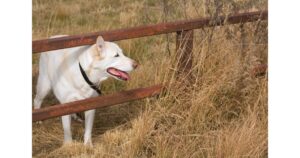
Tips for Training Your Dog
Training your dog to respect the boundaries set by the outdoor fence is a pivotal step in ensuring their safety and freedom. A well-trained pup can enjoy the outdoors while staying secure within the designated area. Here are some comprehensive tips to make your dog’s training experience successful and enjoyable for both of you:
1. Embrace Positive Reinforcement: One of the most effective training methods is positive reinforcement. Reward your dog with treats, praise, and affection when they stay within the designated area. These rewards serve as incentives, helping your furry friend understand that obeying the boundaries is a rewarding and positive experience. Consistency in using positive reinforcement is key to reinforcing their understanding.
2. Early supervision matters: During the initial phases of training, it’s crucial to supervise your dog closely when they’re outside. This hands-on approach ensures that they grasp the concept of boundaries and become familiar with the signals emitted by the fence. By supervising early on, you can promptly redirect them if they venture too close to the fence line. This supervision not only safeguards their safety but also accelerates the learning process.
3. Prioritize Consistency: Consistency is the foundation of successful dog training. Regular, short training sessions are far more effective than sporadic, lengthy ones. Ensure that everyone in your household is on the same page when it comes to training your dog. Consistent cues and commands make it easier for your pup to understand what’s expected of them. This reliability in training routines helps reinforce their understanding of boundaries.
4. Leash Training Inside Boundaries: In addition to utilizing the fence signals, it’s beneficial to use a leash when walking your dog inside the designated boundaries. This serves a dual purpose. Firstly, it helps reinforce their comprehension of the boundaries by allowing them to associate the leash with the established limits. Secondly, it provides an extra layer of security, especially during the initial phases of training. As your dog becomes more accustomed to the boundaries, you can gradually transition to off-leash activities, always maintaining a watchful eye.
5. Avoid Punishment: It’s crucial to emphasize that positive reinforcement should be your go-to training method. Avoid punishing your dog for crossing the boundaries, as this can lead to anxiety, confusion, and a negative association with the outdoor area. Punishment often yields counterproductive results and may hinder the training process. Instead, focus on rewarding your dog for staying within the boundaries, making it a joyful and fulfilling experience for them.
Incorporating these comprehensive training tips into your routine will significantly enhance the effectiveness of your dog’s boundary training. Positive reinforcement, early supervision, consistency, and leash training will ensure that your pup understands and respects the outdoor fence boundaries. By avoiding punishment and focusing on creating a positive training experience, you’ll foster a stronger bond with your dog and create a secure and happy outdoor environment for them. Remember that patience and encouragement are key elements of a successful training journey for both you and your four-legged companion.
Maintaining Your Dog Fence
Maintaining your outdoor dog fence is vital to ensuring it continues to function correctly and keeps your furry friend safe. Here, we’ve outlined a range of maintenance tips to help you keep your dog fence in excellent working condition, promoting both your peace of mind and your dog’s happiness:
1. Regular Inspections: Frequent inspections are the cornerstone of dog fence maintenance. Regularly examine both the fence itself and your dog’s collar for any signs of wear or damage. Look for loose wires, frayed cables, or any components that seem out of place. Should you identify any faults, it’s imperative to address them promptly. Timely repair or replacement of damaged components will maintain the effectiveness of your fence and the safety of your dog.
2. Battery Replacement: If your dog fence system operates on batteries, adhering to the manufacturer’s recommended battery replacement schedule is vital. Properly functioning batteries are essential for the consistent performance of the system. Replacing them as advised ensures that your dog’s collar and the entire fence will continue to function optimally.
3. Seasonal Adjustments: Some dog fences may necessitate seasonal adjustments to accommodate changing weather conditions. For instance, during the winter, when the ground is frozen and less conductive, you might need to modify the collar’s sensitivity settings. Ensuring that the system’s settings are aligned with the current season guarantees that your dog receives accurate signals and remains within the boundaries, regardless of the weather.
4. Boundary Flags: During the initial training phase, boundary flags are an invaluable tool for both you and your dog. They serve as visual cues to help your pup understand the boundaries of the fence. However, once your dog becomes well-acquainted with these limits, it’s advisable to remove the flags. This step signifies that your dog has internalized the boundaries and no longer requires visual reminders. Removing the flags is a positive reinforcement of your dog’s training progress and promotes a clutter-free outdoor environment.
5. Training Reinforcement: Occasional reinforcement of your dog’s training is essential, especially if they haven’t been outside for an extended period. Dogs, like humans, benefit from reminders. By occasionally revisiting training exercises and providing positive reinforcement for respecting boundaries, you can ensure that your dog consistently adheres to the fence’s limits. This refreshes their memory and reinforces their understanding of the boundaries.
By consistently following these maintenance tips, you’ll keep your outdoor dog fence in prime working condition. This not only ensures your dog’s safety but also fosters a secure and enjoyable outdoor environment for them. Remember that the maintenance process is an ongoing commitment, and regular check-ups and adjustments are key to the long-term effectiveness of your dog fence system. So, invest a little time and effort in maintaining your fence, and you’ll reap the rewards of a happy, secure, and contented canine companion.
External Sources for Further Information
It’s always a good idea to gather information from various sources to make informed decisions. Here are some external sources where you can find additional information about dog fences additional collar petsafe and related topics:
- American Kennel Club (AKC): The AKC provides valuable information on dog care, training, and outdoor safety.
- Cesar’s Way: Cesar Millan, the renowned dog behaviorist, offers insights into dog training and behavior, including outdoor safety.
- PetMD: PetMD is a reliable source for pet health and wellness information, including tips on keeping your dog safe outdoors.
- Consumer Reports: For reviews and recommendations on various dog fence systems, check out Consumer Reports.
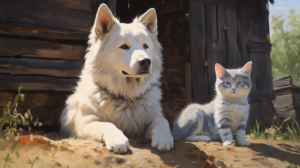
Conclusion
A dog fence is an essential addition to your property if you want to ensure your dog’s safety and provide them with the freedom to enjoy the great outdoors. By understanding the various types of dog fences, selecting the right one for your specific needs, and following proper installation and training procedures, you can create a secure and happy environment for your furry friend. Regular maintenance and occasional reinforcement of training will guarantee that your dog stays safe and content in their outdoor haven. So, go ahead and choose the best dog fence outdoor that suits your needs, and let your pup enjoy life.
